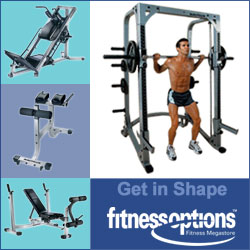
Key Takeaways
- Elite performers have developed specific mental focus techniques that set them apart from their sub elite counterparts. These techniques include strategic attention control and personalized pre-performance routines.
- The 60-second micro meditation technique can quickly reset focus during high pressure situations. This makes it a powerful tool in any performer’s mental toolkit.
- Elite focus isn’t just about the length of concentration but the quality of attention. It’s also about the ability to shift between broad and narrow focus states at will.
- Mental performance specialists at Focus Blueprint have developed proprietary techniques. These techniques help performers achieve optimal focus states more consistently.
- Neurological research shows that top performers process distractions differently. This allows them to maintain the quality of their performance even when faced with unexpected challenges.
The difference between an gymnasts gym workout plan isn’t just talent or the number of hours of practice. It’s the quality of mental focus. What elite performers know that others don’t is that focus isn’t a fixed trait.
How Top Performers Stay on Top: The Power of Elite Focus
Have you ever noticed how some performers seem to be in a league of their own, even on their off days? It’s not about what they do, but how they focus. Elite performers have honed the ability to direct their attention with pinpoint accuracy, ignoring anything that doesn’t contribute to their performance goals right now. This isn’t a natural gift it’s a skill they’ve developed over time.
What separates the best from the rest is often their ability to manage their focus. According to research from British sports psychologists, the best performers have a unique ability to switch between different states of attention from being broadly aware to narrowly focused at exactly the right times. They don’t just focus more, they focus more effectively.
These elite athletes gym workout plans who perform what psychologists term “attentional control,” which is the capacity to stay focused on pertinent cues even when distractions, stress, and tiredness are at their highest. This is why a basketball player who has won a championship can make the game winning free throw while 20,000 fans are screaming to disrupt their concentration. It’s not about ignoring distractions it’s about deciding what to focus on in spite of them.
How Elite Performers Harness the Power of Intense Concentration
The minds of elite performers are wired differently. Thanks to neuroscience and advanced imaging techniques, we can now delve into these differences. The findings are intriguing and defy traditional beliefs about how concentration works among top performers.
How Top Performers Handle Distractions
When distractions come up, ordinary people tend to have a lot of activity in the amygdala, the part of the brain that detects threats. This sets off stress hormones and reduces performance. But top performers have more activity in the prefrontal cortex, the part of the brain that handles executive function and emotional regulation. So, they see potential distractions as information, not threats.
The difference between you and elite performers is not innate it’s trained. With consistent practice of specific focus techniques, elite performers have been able to rewire their neural pathways. They’ve trained their brains to become more efficient at maintaining focus on performance relevant tasks and filtering out performance irrelevant stimuli. And the best part? You have the same neuroplasticity in your brain, meaning you can develop these pathways with the right training approaches.
How Brain Chemistry Affects Peak Concentration
There’s a specific neurochemical signature that occurs during these periods of optimal focus. The brain releases a cascade of chemicals that enhance performance, dopamine (which increases motivation), norepinephrine (which sharpens attention), endorphins (which create a positive feeling), anandamide (which promotes lateral thinking), and serotonin (which promotes a sense of well being).
Elite gymnasts gym workout plan have incorporated how to intentionally spark this neurochemical cocktail, instead of hoping it will occur randomly. They can use pre performance routines, environmental cues, and mental triggers to stimulate these brain chemicals that enhance focus when they’re needed the most. The techniques we’ll discuss can help stimulate this ideal brain chemistry on demand.
“The mind of an elite performer is not only more focused, it’s also wired differently. They’ve created neural networks that process focus, distraction, and pressure in a way that enhances rather than hinders performance, all thanks to specific training.” – Dr. Michael Gervais, High Performance Psychologist
Length of Focus: It’s Not How Long, But How Well
It may seem counterintuitive, but elite performers don’t sustain focus for long periods. Science has shown that the human brain isn’t built for constant, uninterrupted focus. Even Olympians have lapses in concentration. What sets elite performers apart is their mastery of micro recovery taking short mental breaks and then quickly re-engaging with full focus.
Research using eye tracking technology has shown that elite performers utilize a technique called “quiet eye” a unique visual focus pattern that improves physical performance. Their gaze becomes incredibly steady just before they perform crucial movements. This isn’t a coincidence, it’s a learned focus technique that significantly enhances performance precision and consistency.
5 Mental Focus Techniques Used Daily By Elite Athletes
While theories about focus can be illuminating, it’s the actual application that makes winners. The following five techniques are used daily by top performers across a variety of fields. These aren’t just abstract ideas, but practical methods that you can start using right away.
These techniques are particularly valuable because of their versatility. Whether you’re preparing for a championship match, a surgical procedure, or a high stakes presentation, these mental focus practices translate across domains. They represent the practical toolkit of elite focus.
-
Micro Meditation: The 60-Second Reset
Top performers don’t have the time for hour long meditation sessions before performances. Instead, they’ve perfected the micro meditation a 60-second mental reset that can be done anytime, anywhere. This technique involves three deep diaphragmatic breaths while focusing on a single point of attention (often a sensation in the hands or feet). This short practice triggers the parasympathetic nervous system, reducing stress hormones and creating a brief “reset” of attentional resources.
Michael Phelps, an Olympic gold medallist, was known for using this technique between swimming events. He could transition from celebrating a victory to mentally preparing for his next race in just 60 seconds. The beauty of this technique is that it is simple and immediate. It requires no equipment and can be done discreetly, even in high pressure environments.
-
Using Trigger Words to Activate Instant Focus
Elite performing athletes gym workout plan often use personal trigger words or short phrases that immediately draw their attention to cues that are relevant to their performance. These verbal anchors activate neural pathways that are associated with the best performance states. The most important thing is specificity. The most effective trigger words refer to specific sensations, thoughts, or images that are associated with your best performances.
Rafael Nadal, the tennis champion, uses particular words between points to refocus his mind. These aren’t generic motivational phrases, but specific cues that activate his optimal performance state. Your trigger words should be derived from your personal experience and be directly related to the sensation of focus in your body when you’re at your best.
-
Pulsing Concentration
Top performers know that concentration isn’t a steady state it ebbs and flows. They purposely arrange their focus in rhythmic patterns that match the natural rhythm of their field. This means switching between times of deep focus and short periods of relative relaxation, allowing them to maintain concentration throughout a performance.
Pro golfers are a great example of this technique. They keep a relaxed focus as they walk from shot to shot, ramp up their focus during their pre-shot routines, hit peak concentration during the shot itself, and then immediately let go of that intensity afterward. This rhythm of focus helps prevent mental fatigue while ensuring that focus is at its peak right when it’s needed. By identifying the critical moments that require your most intense focus, you can create your own rhythm of focus.
-
Visual Anchoring Techniques
The eyes guide the mind. Elite performers practice certain visual focus techniques that keep their attention on improving their performance. This method involves identifying exact visual goals that enhance performance in your field, then practicing consistent eye movements until they become second nature.
NBA players who specialize in free throws aim for the same spot on the rim every time they shoot. Concert pianists look a little bit ahead of where they’re currently playing. Surgeons keep their eyes steady on important anatomical landmarks. These aren’t random habits. They’re visual anchors that people train themselves to use to improve their performance. The technique works by reducing visual distractions and making the way your brain processes spatial information during complex motor tasks more consistent.
-
Distraction Inoculation Training
Instead of trying to avoid distractions, elite performers purposely expose themselves to possible interruptions during training. This systematic desensitization builds a psychological resistance to events that could break their concentration. By slowly increasing the intensity and unpredictability of distractions during practice, performers create neural pathways that stay stable even under intense pressure.
Top-tier teams train with the sound of a roaring crowd playing in the background. Surgeons prepare for their job by dealing with fake emergencies. Public speakers practice their speeches with people in the crowd who are paid to heckle them. This isn’t just about getting used to distractions it’s about teaching your brain to stay focused on what’s important even when there are distractions. Start by figuring out what might distract you, then slowly start to introduce those distractions when you’re practicing.
The All Encompassing Method to Mental Focus
Top performers understand that elite focus doesn’t come from a vacuum. They know that mental focus is affected by their physical state, their surroundings, and the lifestyle choices they make. Therefore, to truly master focus, they approach each of these dimensions with purpose.
The Connection Between Sleep Quality and Focus
The groundwork for superior concentration starts well before the day of the performance. A study in the Journal of Sleep Research shows that even a slight lack of sleep can decrease attention span by up to 33% and seriously hinder working memory the cognitive function crucial for keeping focus during complicated tasks. Elite performers make sleep hygiene a top priority, treating it not as recovery but as a proactive way to improve performance.
It’s well known that LeBron James sleeps for 12 hours before any big game. This might seem like a lot, but there’s actually a lot of science behind it. When you’re in a deep sleep, your brain strengthens the neural pathways that help you focus and gets rid of metabolic waste that can mess with your cognitive function. The prefrontal cortex, which helps you pay attention for longer periods of time, is especially sensitive to not getting enough sleep.
For practical application, focus on sleep consistency rather than just duration. Maintaining regular sleep wake times stabilizes your circadian rhythm, optimizing the quality of sleep you get. Elite performers also create detailed sleep routines, eliminating blue light exposure 90 minutes before bedtime and keeping their sleeping environment at precisely 65-68°F (18-20°C), the temperature range shown to optimize sleep architecture.
Fuelling Your Brain: Nutrition for Mental Clarity
The brain is a powerhouse of energy, using up to 20% of your body’s energy while only making up 2% of its weight. Within elite performing athletes gym workout plan they know how to keep this cognitive engine running smoothly. They use nutrition strategies that emphasize glucose stability, anti inflammatory compounds, and specific micronutrients that support the production of neurotransmitters. Instead of relying on caffeine for a short lived burst of energy, they achieve true mental clarity through metabolic stability. This is done by maintaining steady blood glucose levels with properly timed complex carbohydrates, quality proteins, and healthy fats.
Exercise to Improve Concentration
Surprisingly, one of the best ways to improve focus isn’t about trying to concentrate more. Short bursts of physical activity can significantly improve the quality of focus afterward. A ground-breaking study in the Journal of Cognitive Enhancement discovered that just 6 minutes of moderate exercise could immediately improve attention span and information processing for up to 2 hours afterward.
That’s why a lot of top performers include some form of physical activity in their warm up routines. The science behind it has to do with increased blood flow to the brain and the release of a protein called brain derived neurotrophic factor (BDNF), which improves the quality of neural connections. To put this into practice, include short periods of physical activity (5-10 minutes) before you need to concentrate hard on something. The trick is to make sure the activity is of moderate intensity enough to get your heart rate up but not so intense that it makes you really tired.
Effective Pre-Performance Focus Strategies
For high achievers, the time leading up to a performance is crucial. This make or break period can mean the difference between a scattered mind and a razor sharp focus. The most accomplished performers have developed exact pre-performance routines to consistently achieve the perfect mental state.
The Ultimate 15-Minute Focus Warm Up
Elite focus starts with a well structured mental warm up. Just like you wouldn’t do any physical activity without warming up your muscles, you should not try to achieve peak mental performance without warming up your attention systems. The perfect focus warm up follows a specific sequence designed to gradually narrow down attention from a broad awareness to a pinpoint concentration.
Begin with 3 minutes of deep belly breathing to stimulate your rest and digest response. Next, spend 5 minutes on mindfulness exercises, carefully observing what you see, hear, and feel without forming opinions. Then, dedicate 5 minutes to mental rehearsal, imagining yourself performing successfully with as many sensory details as possible. Finally, spend 2 minutes repeating a power word while assuming the exact physical posture you’ll use during your performance.
This process isn’t random it maps the neurological journey from relaxation to activation to specific performance focus. The sequence has been honed through work with Olympic athletes who need reliable focus on demand. What makes it effective is the consistency and precision of each element, not just the time invested.
Designing Focus Triggers in Your Environment
The space around you can greatly influence your ability to concentrate, both on a conscious and subconscious level. Top performers intentionally design their surroundings with specific triggers that prompt them to focus. Over time, these triggers become linked with high level performance through repeated association, eventually leading to an automatic response of intense focus.
For example, a professional violinist may always use the same brand of rosin before performances. Not because it’s technically the best, but because the distinctive smell has become neurologically paired with performance focus. A surgeon may listen to the same 90-second audio clip before entering the operating room. These are not superstitions, but deliberately cultivated environmental triggers.
For creating your own environmental focus cues, you should find sensory elements that can stay the same across your performances. These can be specific sounds, scents, tactile sensations, or visual markers. Then, you should pair these cues with your focused practice sessions in a systematic way. Over time, these elements will by pass your conscious mind and directly activate neural networks associated with your optimal focus state.
Personalization: Discovering Your Own Focus Formula
The most effective focus techniques are those that are custom made to fit your specific cognitive and emotional patterns. Top performance psychologists stress that focus strategies should be in line with your personal attentional tendencies, instead of adhering to generic models. What works wonderfully for an outgoing, visually oriented performer may not work at all for an introverted, kinaesthetic learner.
Start tailoring your focus techniques by pinpointing your inherent attentional habits. Do you concentrate more effectively with background noise or in absolute silence? Does your concentration get better or worse when you’re pressed for time? Are you more easily side tracked by visual, auditory, or internal distractions? By responding to these queries through methodical self awareness, you can fine tune general focus techniques into a customized strategy that cooperates with your innate inclinations instead of contradicting them.
Imaginary Practice: Teaching Your Mind to Concentrate in Stressful Situations
The mind does not completely separate powerfully envisioned experiences from real ones. Top level performers like athletes have within there gym workout plan, use this neurological truth through organized imaginary practice to pre-train their concentration for high stress situations.
Imagining Techniques That Develop Neural Connections
Visualization is more than just imagining success. The best performers use structured imagining techniques to improve their focus under pressure. They do this by mentally practicing their entire performance while including potential distractions and focus issues. For more insights, discover what elite athletes do differently to maintain their concentration.
The method follows a specific order, start by imagining perfect performance execution in ideal conditions, focusing on the sensory details of maintaining optimal concentration. Slowly introduce visualization of minor distractions while maintaining this ideal focus. Finally, progress to visualizing major disruptions while still maintaining your performance focus.
By practicing mental training, you are creating neural pathways that will help you maintain focus before you are faced with real challenges. When distractions do occur, your brain has already practiced keeping focus. Research has shown that this technique can literally change the structure of your brain, increasing the density of grey matter in regions related to attention.
Training for High Stress Situations
Elite performers don’t just visualize, they also use structured simulations to practice focusing under increasingly high pressure scenarios. This gradual exposure helps build mental toughness and the ability to maintain focus, which directly translates to their performance in real world scenarios.
Start by pinpointing the particular elements of stress that pose the greatest challenge to your concentration whether it’s time pressure, fear of evaluation, the significance of the outcome, unforeseen changes, or factors related to the audience. Then, devise training situations that gradually incorporate these elements in manageable amounts. Keep track of objective data on the quality of your focus during these mock scenarios, looking for specific patterns of breakdown that indicate where your attention is most likely to falter.
The secret lies in progressive overload slowly heightening the stress variables while keeping the quality of performance intact. This in stills self assuredness in your focusing skills because you’ve already triumphed under conditions that mimic or even surpass the real performance pressure.
Interval Training for the Brain
Top performers use a method similar to interval training to improve their focus. They practice for short, intense periods and then take a break, rather than trying to stay focused for long periods of time. This method, known as spaced repetition, is based on research showing that we learn and remember more when we study in short bursts rather than in long sessions.
For the best results, practice focusing for 5-10 minutes at a time, 3-5 times a day, each time concentrating on a different aspect of attention control. This method takes advantage of the brain’s natural consolidation processes and avoids the diminishing returns that can result from long practice sessions.
Regaining Focus: The Way Top Performers Overcome Distractions
No matter how well you prepare, it’s impossible to avoid distractions. What sets top performers apart isn’t their ability to stay focused without interruptions, but their ability to quickly regain focus when it’s lost. While the average performer might take several minutes to mentally recover from a major distraction, a top performer can do it in just a few seconds.
The Three R’s: Recognize, Reset, Return
High achievers use a structured approach to regain focus, known as the Three R’s. Initially, they Recognize the shift in focus without judgment or emotion, merely observing that their focus has moved from things that are relevant to their performance to things that are not. This awareness alone starts to stimulate areas of the prefrontal cortex that are linked to attention control.
Then, they use a micro technique to reset usually one deep breath coupled with a trigger word or physical gesture to disrupt the pattern. This step forms a clear transitional moment instead of letting the mind slowly drift back into focus. Lastly, they consciously Return their attention to a specific, predetermined anchor point in their performance, resulting in immediate reengagement with the task.
While the 3R sequence only takes about 2-3 seconds, it greatly enhances the consistency of performance compared to unstructured recovery methods. This technique is especially useful because it doesn’t require you to prevent distractions, but rather to effectively manage your inevitable return from them.
Moving on from Mistakes
One of the most important skills that elite performers have is the ability to quickly move on from mistakes or setbacks. This isn’t about denying or ignoring these setbacks, but rather about being able to separate their performance from the outcome. Studies have shown that performers who are able to do this recover much more quickly in terms of both their focus and their performance after making a mistake.
Elite performers use a very specific language and thought process. Instead of saying “I made a mistake”, they say “That was a mistake”. It’s a small change, but it activates different parts of the brain, making them less emotional and more analytical. They also use something called temporal distancing. This means they think about the mistake in the context of the whole performance, instead of letting it take over their thoughts in the moment.
A 21-Day Plan to Boost Your Focus
Boosting your focus isn’t about waiting for inspiration to strike it’s about putting a system in place. This 21-day plan takes the techniques we’ve discussed and puts them into a structured training program that gradually builds up your focus. Each phase of the plan builds on the last, starting with basic techniques for controlling your attention and ending with advanced techniques for maintaining focus during high-pressure situations.
Week 1: Laying the Groundwork for Concentration
| Day | Morning Activity | Afternoon Activity | Evening Activity |
| 1-3 | 5-minute breathing focus meditation | 3-minute mini-meditation | Concentration journal entry |
| 4-5 | Sensory awareness exercise | Trigger word creation | Environmental cue implementation |
| 6-7 | Rhythmic concentration pattern practice | Visual anchoring drill | Sleep hygiene improvement |
The initial week is dedicated to setting up the neurological basics of focus control. Start with simple breathing focused attention training to build the mental “muscles” necessary for prolonged concentration. While these exercises may seem basic, they’re creating important neural connections that will be necessary for more advanced techniques.
On the fourth and fifth days, you’ll start to create your own focus triggers and play around with sensory awareness to figure out what patterns of attention work best for you. The last few days of the first week will be spent putting these elements together in a structured way and fine tuning the environmental factors that help you build your focus.
During this stage, success is not gauged by the results of your performance, but rather by your ability to complete practice consistently and improve your understanding of your own attention patterns. The focus journal entries are especially crucial in this initial stage, as they help to develop metacognition, or your understanding of your own focus processes.
Week 2: Raising the Stakes with Distractions
In the second week, you’ll start to add more challenging elements to your focus training. Every day, you’ll introduce distractions that get progressively more intense, all while trying to keep your attention on the things that matter for your performance. Start with small distractions, like noises, during your focus exercises. Then, move on to visual distractions, and finally, mix different types of distractions together. By the end of the week, try to use your focus techniques while also creating the feeling of pressure that comes with a real performance. This method, which slowly exposes you to distractions, can help make your attention stronger and stop you from losing focus when something unexpected happens during a performance.
Week 3: Integrating Performance
In the final week, we will move from focus training as a separate practice to incorporating it into your actual performance. Each day, use your full pre-performance focus routine before you begin practicing your skill. Practice the 3R recovery method whenever you lose focus, gradually decreasing the time it takes you to recover. Incorporate visualization sessions that combine maintaining focus with technical execution. For more insights, explore how elite athletes maintain focus during their performances.
Control Your Thoughts: The Ultimate Edge in Performance
The techniques in this article represent more than just performance enhancement they offer a fundamental shift in how you experience your craft. As you develop elite focus abilities, you’ll find that performance becomes simultaneously more intense and more effortless. The mental noise that once clouded your experience fades, revealing a clarity and presence that transforms not just results but the subjective experience of performing. In a world obsessed with physical training and technical development, mental focus remains the most underexploited performance advantage. The question isn’t whether you can afford to invest in these techniques it’s whether you can afford not to.
Common Questions
Here are answers to the most asked questions about building world class concentration. The answers are based on both scientific studies and practical use with the best performers in various fields.
What is the timeline for achieving top-tier concentration?
Notable enhancements in the quality of concentration usually start to appear within 2-3 weeks of regular practice with the methods described above. However, to develop a truly top-tier concentration the kind that stays steady under intense pressure usually needs 3-6 months of methodical training. The timeline for development is greatly influenced by your starting point, the regularity of your practice, and how specific your training is to your performance field. Rather than concentrating on an endpoint, see concentration development as an ongoing process of improvement. Even Olympic athletes continue to improve their concentration skills throughout their careers.
Do focus techniques work in creative fields as well as they do in sports?
Definitely. While the applications may vary slightly, the basic principles of attention control are the same across all areas. Creative professionals can actually greatly benefit from structured focus techniques because creative work requires a balance between divergent thinking (wide, associative focus) and convergent thinking (narrow, analytical focus). The rhythmic focus patterns and attention shifting techniques are especially helpful for creative performers because they allow them to intentionally transition between the inspiration and execution phases. Many famous artists, writers, and musicians credit their prolific output not to occasional inspiration but to disciplined focus habits that allow them to consistently create regardless of initial motivation.
What is the most common focus mistake made by performers?
The biggest mistake is trying to stay continuously focused for long periods of time. This strategy leads to attention fatigue, decreased productivity, and eventually a breakdown in performance. The human brain works best when there is a rhythmic alternation between periods of focused attention and short recovery periods.
One common error is trying to get rid of distractions instead of improving concentration. Top performers understand that distractions are unavoidable and instead work on developing better recovery abilities. They put their efforts into learning how to refocus quickly rather than trying to create an environment with no distractions.
Lastly, a lot of performers overlook the physical underpinnings of mental focus, especially the quality of sleep and metabolic stability. Elite focus starts with physiological optimization.
“The majority of people don’t realize how much they could improve their performance with the right focus training. They’ve never reached their full potential because they’ve never truly focused.” — Dr. Jim Loehr, Performance Psychologist
How can I tell if my concentration issues are normal
You should consider getting a medical evaluation if you have a persistent inability to concentrate even when you’re getting enough sleep and eating right, a significant recent change in your ability to concentrate, problems concentrating along with other cognitive changes, or problems concentrating that don’t get better even when you consistently use structured techniques. Conditions like ADHD, sleep disorders, nutritional deficiencies, and anxiety disorders can all show up as problems with concentration.
The micro meditation technique is especially useful in office settings where you need to quickly shift focus between different tasks or meetings.</p>
Spaced repetition is an excellent focus technique for studying. It fits well with the best ways to learn.
The Main Secret To Make This All Work
The secret to making these techniques work is to scale them to meet the needs of your situation, while still adhering to the basic principles. Even a simplified version of these techniques will usually be more effective than an unstructured approach to managing your attention.
Don’t forget that focus is a basic mental ability that forms the foundation for everything from learning to making decisions to doing creative work. Enhancing this skill can lead to a ripple effect of benefits in all areas that require mental performance.
Elite performers, whether they are athletes, musicians, or CEOs, often use mental focus techniques to help them achieve their goals. Here are some of the most common techniques that these high achievers use:
- Meditation: Many elite performers use meditation to help them focus and calm their minds. This can be particularly useful in high pressure situations.
- Visualization: This involves picturing yourself achieving your goal in your mind. It can help to boost your confidence and motivation.
- Positive self talk: This involves repeating positive affirmations to yourself. It can help to boost your self esteem and reduce negative thoughts.
- Goal setting: This involves setting specific, measurable, achievable, relevant, and time bound (SMART) goals. It can help to keep you focused and motivated.
- Mindfulness: This involves focusing on the present moment, rather than worrying about the past or future. It can help to reduce stress and improve your mental focus.
Looking to up your fitness game? Our fitness equipment is just what you need. Say goodbye to generic workouts and hello to a equipment that's tailored to your unique goals and needs. With our guidance, you'll be amazed at what you can achieve. Click Here to discover the power of personalized fitness.






